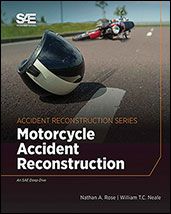Journal Article
Acceleration of Left Turning Heavy Trucks
2020-04-14
2020-01-0882
Accidents involving heavy trucks turning left across travel lanes of a roadway are common subjects of investigation in the field of accident reconstruction. The distance traversed during a turn and lateral and tangential accelerations of the left turning heavy truck can be used to model its motion and determine timing as it relates to a collision. As a follow up to the 2019 SAE Accident Reconstruction section paper by the authors (2019-01-0411), this paper will investigate the longitudinal and lateral accelerations of heavy trucks during small, medium, and large radius turns and analyze peak and average lateral accelerations as they relate to turn radius and vehicle speeds. This study analyzed 70 tractor-trailers, 19 straight trucks and 15 bobtail tractors for a total of 104 heavy trucks.

